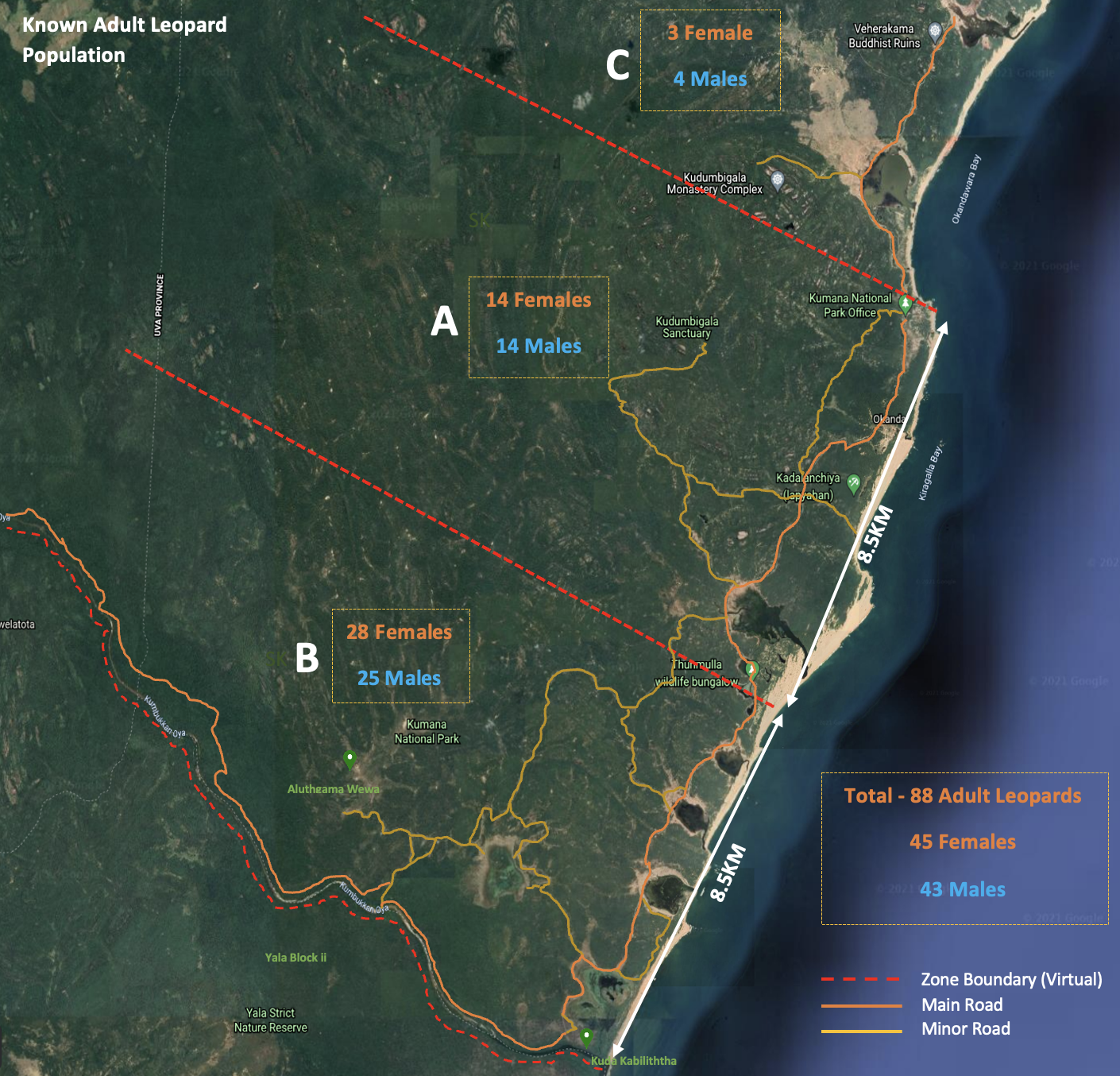Kumana National Park has long served as a vital stronghold for the Sri Lankan leopard (Panthera pardus kotiya). Bordering the Kudumbigala Sanctuary and Yala Block II, the park offers some of the most suitable habitats in Sri Lanka, allowing leopards to thrive and display a wide range of natural behaviors.
Our journey began in 2010, visiting Kumana as wildlife photography enthusiasts. Over the years, we came to deeply appreciate the solitude and unspoiled beauty of the park. At the time, leopard sightings were rare but memorable—peaceful moments largely due to the limited number of visitors. As we spent more time in the field, observing the elusive leopards within the boundaries of Kumana and Kudumbigala, we gradually realized the importance of identifying individual animals and continuously documenting their behavior.
Understanding individual leopards is critical to studying population dynamics, territorial behaviors, breeding patterns, and overall species health. It also contributes significantly to park management and long-term conservation planning. In 2019, we formally launched this initiative in collaboration with park officials, focusing on the identification and behavioral documentation of leopards in the park.
This ongoing work has enhanced our understanding—and that of the park staff—of leopard population density and the extent of individual territorial ranges. All data collected is grounded in photographic evidence contributed by a wide network of wildlife enthusiasts, park officials, safari operators, and other key stakeholders.
This work is voluntarily initiated by Sasika Sri Sanjeewa, Wasantha Disanayaka, Thaamara Kariyawasam, Prashanth Jayasekera, Danushka Senadheera & Shanaka Kalubowila (Authors of this study).
Disclaimer:
The leopard data collected through this initiative is based on observations made by visitors to the Kumana national park and Kudumbigala Sanctuary. While every effort is made to ensure accuracy, the information recorded reflects sightings and behavioral notes from the scope of visitor experiences and may not represent scientifically validated findings. This data serves as a supplementary resource to support ongoing Leopard conservation efforts and behavioral studies.
Individual leopards are being identified by analyzing their rosette patterns and spot formations which are unique from one individual to another. Identification codes are formed in the following format:
| Abbreviation | Description |
|---|---|
| K | Stands as the first letter of the national park name (Kumana) |
| L | Stands for Leopard |
| M or F | Reflects the Gender (Male/Female) of the Leopard |
| "01", "02", "03", "04", "05" | Unique sequential number to individually identify individuals |
E.g.
KLM8 - indicates the 8th Male Leopard identified in Kumana
KLF5 - indicates the 5th Female Leopard identified in Kumana
Due to limited mobile reception within the park, both visitors and park staff may find it difficult to access the website or Facebook page in real time while inside the park—whether for leopard identification or to retrieve published data from ongoing studies. To address this, an offline field guide was first introduced in 2022. Its primary purpose is to provide on-the-ground access to the unique spot patterns of individual leopards commonly seen along the main travel routes within Kumana National Park.
This guide is updated regularly to ensure the information remains current and relevant.
The document is freely available for download below to anyone interested in learning more about the leopards of Kumana. To subscribe for the latest versions, request additional content, or obtain further information, please contact us at: [email protected]
To periodically analyze data, based on road network limits with the park, the area has been virtually segregated into three sections (Zone A, Zone B & Zone C).

We warmly welcome all wildlife enthusiasts to contribute to this ongoing leopard study. Sightings, observations, and photographic evidence shared by contributors are highly valued and play a vital role in our conservation efforts.
All data contributions will be acknowledged with full credit, and individual copyrights will be respected and listed on the "Contributors" page.
Click here to become a part of this work!
If you'd like to gain further insights or access additional references from our study, feel free to email us at [email protected] or click here to submit your inquiry.